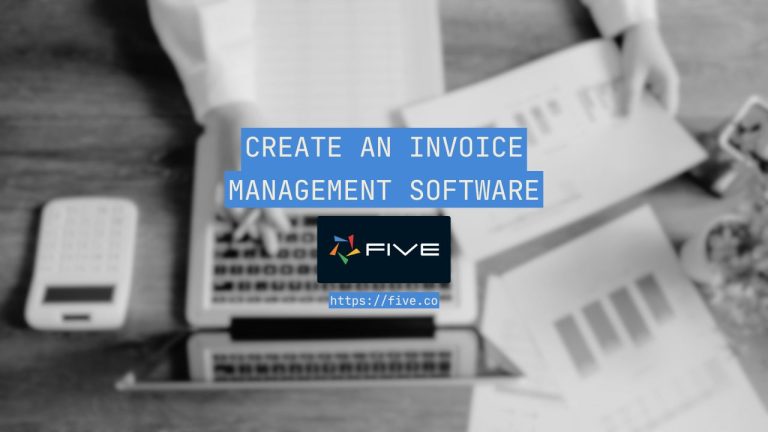Create a Patient Portal In 3 Steps
How to Create a Patient Portal
A patient portal is an online platform that provides patients with easy access to their health details, appointment information, medical records, and other essential documents.
It also allows healthcare providers to efficiently monitor and manage their patient relationships.
It serves as a centralized hub where healthcare providers and patients can oversee medical compliance, track health metrics, and improve communication between all parties involved.
Essential Features for a Patient Portal
These fundamental features provide a solid foundation for building an effective patient portal.
One of the most critical features is user authentication and access control. A secure login system with multi-level access ensures that only authorized users can access specific parts of the portal.
This includes the ability for administrators to create and manage user profiles, reset passwords, and update contact information.
The patient portal should provide real-time access to essential metrics like appointment schedules, medical records, and lab results. Functionalities for monitoring, reporting, communication, and access to historical data are crucial.
Additionally, offering tools for analytics and reporting, such as patient trends, medical history details, and treatment analysis, is vital.
Integration with other internal systems, such as EMRs (Electronic Medical Records), can further enhance the portal’s usefulness.
Build or Buy Your Patient Portal
When it comes to implementing a patient portal, healthcare providers face a crucial decision: should you build a custom solution or buy an off-the-shelf product?
If you build one using Five, you can develop exactly what you need without unnecessary bloat, tailored to your healthcare organization’s specific requirements.
Building a patient portal allows you to connect to your existing IT infrastructure, serving as a single source of truth across all systems. It also ensures compatibility with legacy systems, working around the constraints of older software that may not be replaceable.
Having control over your data is paramount. This means keeping all internal information and sensitive patient data under your direct supervision.
Off-the-shelf patient portal solutions may not offer the same level of data privacy or customization options.
Building a secure patient portal becomes much simpler with Five. Five offers several advantages: it significantly speeds up the development process, requires no extensive coding knowledge, is more affordable than hiring a developer, and allows you to customize your patient portal to meet your specific needs.
In the long run, building a custom solution can be more cost-effective. Licensing fees for off-the-shelf patient portal solutions can add up quickly, with some costing thousands of dollars annually.
Creating a Patient Portal Can Be Easy

Building patient portals used to be a complex task requiring extensive coding knowledge.
Healthcare providers often had to hire “expert developers,” which could lead to high costs and subpar results. Customizations were difficult, often requiring additional development work.
Fortunately, times have changed. Creating patient portals is now much easier with rapid portal builders like Five. These tools simplify the process, making it quicker and more accessible.
With Five, you can jump right in and have your patient portal built and running in a single afternoon. While there is still a learning curve, this approach is far more efficient than traditional methods.
With Five, you can:
- Set up your patient portal interface in minutes.
- Create a user-friendly, login-protected web interface for your patient portal.
- Easily import existing data, allowing you to get started quickly.
Get free access to Five and start building your Patient Portal today.
While we joke about “expert developers,” the Five team actually has a team of experts ready to assist you. So, if you ever feel like you’re in over your head, don’t worry, our expert developers are here to help you. And yes, we promise not to charge you an arm and a leg or leave you with a system that only we understand. To get a free consultation visit this page “Hire An Expert.”
How to Create a Patient Portal
Here’s how you can create a patient portal using Five, along with some prerequisites to consider.
Step 1: Access Five
If you haven’t already, sign up for free access to Five. Five offers a free trial for 14 days with no credit card required. Depending on your project’s complexity and data storage requirements, you may need a paid plan.

Step 2: List Out Patient Portal Attributes
Start by compiling a complete list of all attributes relevant to your patient portal. Consider what matters to your healthcare organization and its patients: appointment schedules, medical records, lab results, communication tools, etc.
Your patient portal should serve as a “single source of truth,” so ensure it’s as comprehensive as possible.
Here are some must-have attributes that are typically included in a patient portal:
- User authentication and access control
- Appointment scheduling and tracking
- Access to medical records and lab results
- Communication tools for patient interactions
- Integration with EMRs and healthcare systems
- Reporting and analytics features
Follow our YouTube tutorial for a step-by-step guide, covering everything starting from database modeling.
The first step explains how to create a database table in Five. This quick four-and-a-half-minute video is highly recommended if your main goal is developing a patient portal.
The video also shows how to assign different SQL data types to your table fields and use Five’s database modeler to visualize your schema. Five automatically adds primary keys to all your tables, simplifying the setup process.
Patient Portal Design and User Experience
Once you have defined your patient portal’s attributes and set up the database tables in Five, you can start focusing on the design and user experience.
Five allows you to create a highly intuitive and user-friendly interface for your patient portal, directly linked to the data stored in your tables.
User-Centric Design with Five: Five allows you to create a highly intuitive and user-friendly interface for your patient portal. It’s easy to design a clean layout, ensuring that users can navigate effortlessly. You can customize the UI to fit your healthcare organization’s branding and user preferences. For instance, users can navigate to a medical dashboard that pulls data directly from your “Patient” table.
Personalization Features: With Five, you can build personalized dashboards for each patient. Users can easily add widgets or shortcuts to their most-used tools and resources, creating a more tailored and efficient user experience.
Built-In Search Functionality: Five offers robust search capabilities that can be easily integrated into your patient portal. Users can quickly locate medical records, appointment data, or information by searching by column names or keywords, making navigation straightforward.
Mobile-Optimized Design: Five enables you to create a responsive patient portal that works on any device. This means users can access essential resources on the go, with a layout that adapts to different screen sizes for optimal usability.
Step 3: Launch Your Patient Portal Online
Once your patient portal’s database is ready and well-defined, you can begin populating it with the necessary data.
Using Five, you can easily upload CSV files directly into your MySQL database. Simply ensure that the columns in your CSV align with the fields in your database, and import the data into your database tables.
Additionally, you can create a user-friendly, web-based database graphical user interface with Five. This interface can feature forms for adding or editing records, charts for visualizing data, and the ability to generate PDF reports using data from the database.
When you’re ready to deploy your patient portal, sign up for one of our paid plans, starting at just $29.99 per month per application. This plan includes unlimited end-users and provides you with a custom URL to access the patient portal online.
Conclusion: Building a Patient Portal
A well-designed patient portal is essential for any healthcare provider looking to provide patients with easy access to their health details and for providers to monitor and manage their patient relationships effectively.
With modern tools like Five, the process of creating a custom patient portal has become more accessible than ever.
Healthcare providers no longer need to rely on expensive developers or settle for one-size-fits-all solutions. Instead, they can rapidly build and deploy a patient portal that truly serves their unique needs.
Get free access to Five and start building your Patient Portal today.


